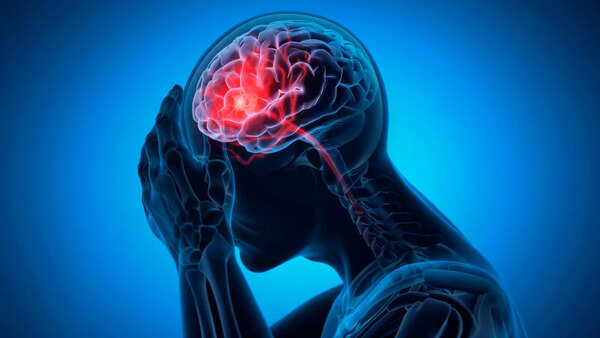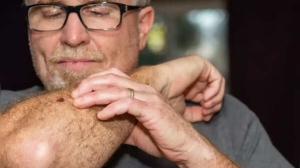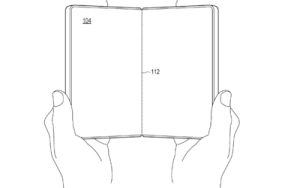A recent groundbreaking study has illuminated a potential link between brain injury and the emergence of criminal behavior. The research specifically points to the disruption of the uncinate fasciculus, a critical neural pathway, as a significant factor.

Brain scan showing the uncinate fasciculus
Researchers from the University of Colorado Anschutz Medical Campus, Brigham and Women’s Hospital, and Harvard Medical School discovered that damage to this area, which connects regions responsible for emotion and decision-making, correlates with an increased propensity for criminal activity. This revelation raises critical ethical questions regarding culpability and the role of brain injury in legal responsibility. The study was published in Molecular Psychiatry.
The researchers analyzed brain scans of individuals who began engaging in criminal behavior following brain injuries caused by strokes, tumors, or traumatic events. They compared these scans to those of 706 individuals exhibiting other neurological symptoms like memory loss or depression. The results revealed a striking pattern: injury to the uncinate fasciculus on the right side of the brain was prevalent among those with criminal behavior. This pattern extended to individuals who committed violent crimes.
Christopher M. Filley, MD, professor emeritus of neurology at the University of Colorado School of Medicine and co-author of the study, explained: "This part of the brain, the uncinate fasciculus, is a white matter pathway that serves as a cable connecting regions that govern emotion and decision-making. When that connection is disrupted on the right side, a person’s ability to regulate emotions and make moral choices may be severely impaired."
Isaiah Kletenik, MD, assistant professor of neurology at Harvard Medical School and lead author of the study, added: "While it is widely accepted that brain injury can lead to problems with memory or motor function, the role of the brain in guiding social behaviors like criminality is more controversial. It raises complex questions about culpability and free will."

Illustration highlighting areas of the brain affected by injury
Kletenik shared that his experience evaluating patients who developed violent tendencies after the onset of brain tumors or degenerative diseases sparked his interest in the neurological basis of moral decision-making.
To further validate their findings, the researchers conducted a comprehensive connectome analysis, utilizing a detailed map of brain region interconnections. This analysis confirmed that the right uncinate fasciculus exhibited the most consistent link to criminal behavior.
Filley emphasized: "It wasn’t just any brain damage; it was damage in the location of this pathway. Our finding suggests that this specific connection may play a unique role in regulating behavior."
The uncinate fasciculus connects brain regions associated with reward-based decision-making and emotion processing. Damage to this pathway, particularly on the right side, can impair impulse control, the ability to anticipate consequences, and empathy, potentially contributing to harmful or criminal actions.

Conceptual image of the human brain
The researchers emphasize that not everyone with this type of brain injury will become violent. However, damage to the uncinate fasciculus may contribute to the onset of criminal behavior following an injury.
"This work could have real-world implications for both medicine and the law. Doctors may be able to better identify at-risk patients and offer effective early interventions. And courts might need to consider brain damage when evaluating criminal responsibility," Filley stated.
Kletenik concluded by highlighting the ethical considerations: "Should brain injury factor into how we judge criminal behavior? Causality in science is not defined in the same way as culpability in the eyes of the law. Still, our findings provide useful data that can help inform this discussion and contribute to our growing knowledge about how social behavior is mediated by the brain."
Newer articles
Older articles
 Android Users Urged to Patch Devices Immediately Following Critical Security Flaws Alert
Android Users Urged to Patch Devices Immediately Following Critical Security Flaws Alert
 JPG to PDF: A Graphic Designer's Guide to Conversion & Best Practices
JPG to PDF: A Graphic Designer's Guide to Conversion & Best Practices
 Ashada Gupt Navratri 2025: Dates, Auspicious Timings, and Esoteric Significance Explained
Ashada Gupt Navratri 2025: Dates, Auspicious Timings, and Esoteric Significance Explained
 IRCTC's AskDisha 2.0: AI Chatbot Streamlines Train Ticket Booking, Refunds, and Travel Information
IRCTC's AskDisha 2.0: AI Chatbot Streamlines Train Ticket Booking, Refunds, and Travel Information
 Skin Cancer Alert: How to Identify Suspicious Moles and Early Warning Signs
Skin Cancer Alert: How to Identify Suspicious Moles and Early Warning Signs
 Popular Finance YouTuber's Account Hacked: Bitcoin Scam Alert and Security Tips
Popular Finance YouTuber's Account Hacked: Bitcoin Scam Alert and Security Tips
 Suryakumar Yadav Undergoes Surgery for Sports Hernia: Examining the Injury, Recovery, and Risk Factors
Suryakumar Yadav Undergoes Surgery for Sports Hernia: Examining the Injury, Recovery, and Risk Factors
 ChatGPT Service Disrupted Globally; OpenAI Confirms Restoration
ChatGPT Service Disrupted Globally; OpenAI Confirms Restoration
 X Cracks Down: Over Half a Million Accounts Suspended in India for Policy Breaches
X Cracks Down: Over Half a Million Accounts Suspended in India for Policy Breaches
 Microsoft's Foldable Phone Ambitions Resurface with Innovative Hinge Design to Rival iPhone, Android
Microsoft's Foldable Phone Ambitions Resurface with Innovative Hinge Design to Rival iPhone, Android